Hawthorn Materia Medica: Hawthorn/Crataegus Berry, Leaf and Flower
Hawthorn is such a generous plant. In the spring we have the leaves, flower buds and flowers to harvest. In the fall, the berries are ripe – and I adjacent leaves make it into my harvest, too.
This post is my own personal Hawthorn Materia Medica, and a condensed summary of its usage, history, medicinal applications (and a bit about other uses) both West and East.
This is just the tip of the iceberg when it comes to Hawthorn!
I hope it will inspire you to both spend some time getting to know this plant, or pay a visit to an old friend if you are already familiar, as well as create your own Hawthorn Materia Medicia that works for you.

Hawthorn for all levels of our being
Cratageus is equally wonderful for physical medicine as it is for emotional-mental-spiritual healing support.
Once an herbalist and I were talking clinical herbs and out of the blue he said, “I’m so glad you are a clinical herbalist, not one of those woo-woo herbalists who think you can take 3 drops of Hawthorn tincture and have a {rolling eyes} heart-opening “.
Well, he was mistaken. I use this plant for medicine and spiritual healing, too. What can I say, I am a Gemini sun and can embrace duality.
Also, it is not nice to put down anyones herbal approach. Herbalism is not one size fits all. Nor are medicine and healing.
Hawthorn is perhaps one of my main spiritual allies, acting as a guide into the realm of the soul particularly for attachment wounds and retrieval of soul pieces.
Hawthorn is no doubt one of my favorite herbs for addressing the heart, such as for palpitations, circulation, fatigue, anxiety which is reflected in the chest and upper digestion.
On the mental-emotional realm, I find Hawthorn useful for improving focus, when the mind feels cloudy and unsure, as well as for holding space for confidence, self-esteem and self-worth.
Because I find Hawthorn so useful, I have this Hawthorn Materia Medica as well as a separate post for the spiritual uses of Hawthorn.
This post on Hawthorn Materia Medicia features photos of Hawthorn flowers, while Hawthorn berries are photographed for the post on the spiritual uses of Hawthorn.
I also have a few posts featuring Hawthorn in tea blends and formulations, notably this tea which I call Day 1 Blood Moving Tea with Yarrow, Motherwort and more. I also have another Hawthorn tea blend blog entry coming up next week, and a Rose Hawthorn elixir recipe to be published soon : )
If you want to have this Hawthorn Materia Medica in a pdf form to download, click here and it will be sent to you via email.
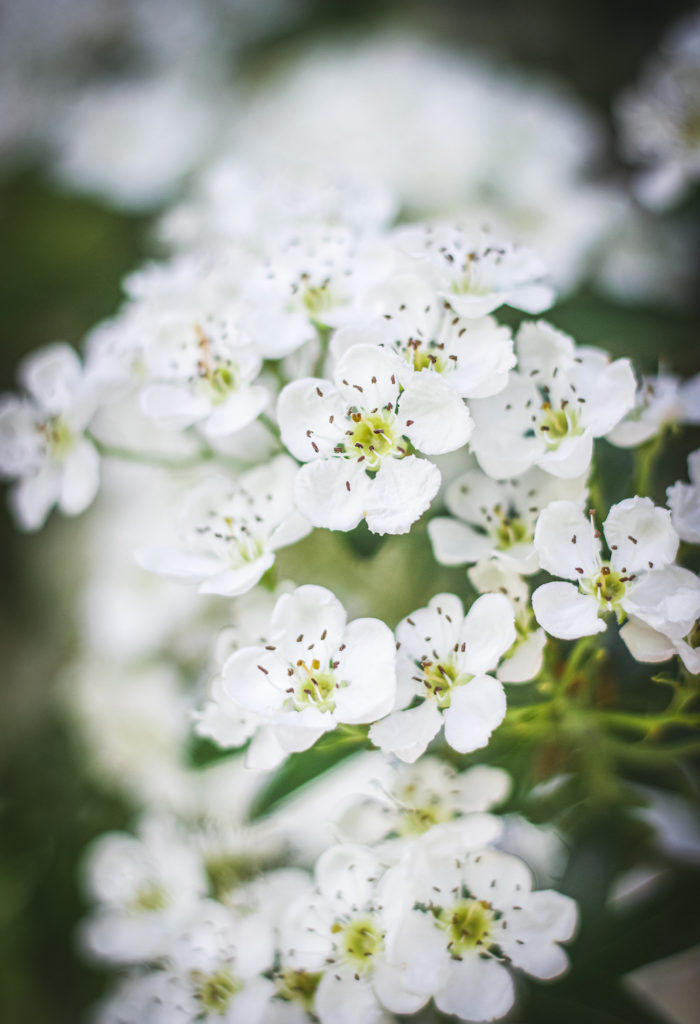
Hawthorn Materia Medica
Hawthorn Crataegus sp. Leaves, flowers and berries used Rosacea
CATEGORY: Move Blood
NATURE: warm
FLAVOR: sweet, sour
CHANNELS: Heart, Pericardium, Stomach, Liver
FUNCTION: Moves Heart Blood, Tonify Heart Blood, Clear Heart Phlegm, stabilizes Heart Qi
ACTION CATEGORIES: Restorative tonic. cardio-regulator, cardio-tonic, anti-anginal, anti-hypertensive, anti-atherogenic, anti-inflammatory, calming sedative
SUMMARY: Nutritive tonic remedy for the heart and circulatory system, stabilizes the heart physically and emotionally, promotes circulation of the heart, digestion, periphery and mind
ACTIVITY/INDICATIONS:
- Heart Blood Stagnation – Moves Blood for chest pain, blockages in the heart, arteries, veins and periphery
- Stabilize Heart Qi – Balances Heart for palpitations, heart failure, high blood pressure, angina pectoris, arteriosclerosis, energy fluctuations; helps the Heart house the Shen/spirit, clarifies focus and attention
- Clear Heart Phlegm – Opens and moves accumulations in the Heart and veins due to Phlegm; reduced Phlegm misting the mind of psychological/emotional origin
- Tonify Heart Qi – Nutritively strengthens the Heart due to aging, overuse, exhaustion
CONSTITUENTS: condensed tannins (oligomeric procyanidins, a polyphenol), flavonoid glycosides (rutin, quercitrin), cyanogenic glycosides, amines, catechols, triterpene acids, sterols, purines, saponins
USAGE: Hawthorn is best taken in small and regular doses over a long period of time.
CAUTIONS: non-toxic, use with caution with Digitalis
……

Western Uses and Rise of Popularity
Hawthorn is used as an essential balancing and nutritive tonifying herb for the heart, but it hasn’t always been that way.
Jeremy Ross speaks about how Hawthorns as a cardiovascular herb is a modern Western application.
Around 50 AD Dioscorides wrote that Hawthorn berries were used for diarrhea and menorrhagia. Other texts echoed those uses, as well as for kidney stones. It was not known as a so-called “heart herb”.
The most heart-related indication historically was for dropsy, or left-heart failure. It was used in cooking at least until medieval times to help the digestibility of meat (echoing the Chinese use).
The Eclectic physician Finely Ellingwood wrote in his 1918 materia medica that Hawthorn had been used as a heart herb with much success since another doctor wrote a “letter to the editor” about its merits in an 1896 medical journal. That published letter, and Ellingwood referencing it in his own text, brought this herb into greater popularity which eventually led it to accumulate a good amount of research into its effects, which in turn led to even more use.
This was a new medicinal application for so many, and you can sense the excitement and wonder in the cases and told. When a novel application of an herb is needed, it will come.
Here are some quotes from his text about Hawthorn which demonstrate its usage – which you can find on Micheal Moore’s website http://www.swsbm.com/Ellingwoods/Ellingwoods.html
“Those who have since used the remedy believe it to be a true heart tonic and restorative and capable of exercising an immediate soothing and strengthening influence upon that organ, thereby improving the circulation, and augmenting oxygenation of the blood.
“I have prescribed it in the heart weakness with valvular murmurs, great difficulty in breathing, persistent sighing respiration, which accompanies neurasthenia or nervous weakness, brought on in young people, from violent overstrain, or prolonged extreme nervous tension. The results of the sudden breakdown, being similar in every way to other cases of neurasthenia.
“It has a general curative effect upon the functional action of the central nervous system; upon every part of the circulatory apparatus; upon the urinary organs, and the processes of metabolism. It dispels gloomy forebodings, increases the strength, regulates the action of the heart, causes a general sense of well being. In its mental influence he [another doctor] thinks he sees a resemblance to the action of pulsatilla, and very often prescribed the two remedies in conjunction.”
Finely Ellingwood
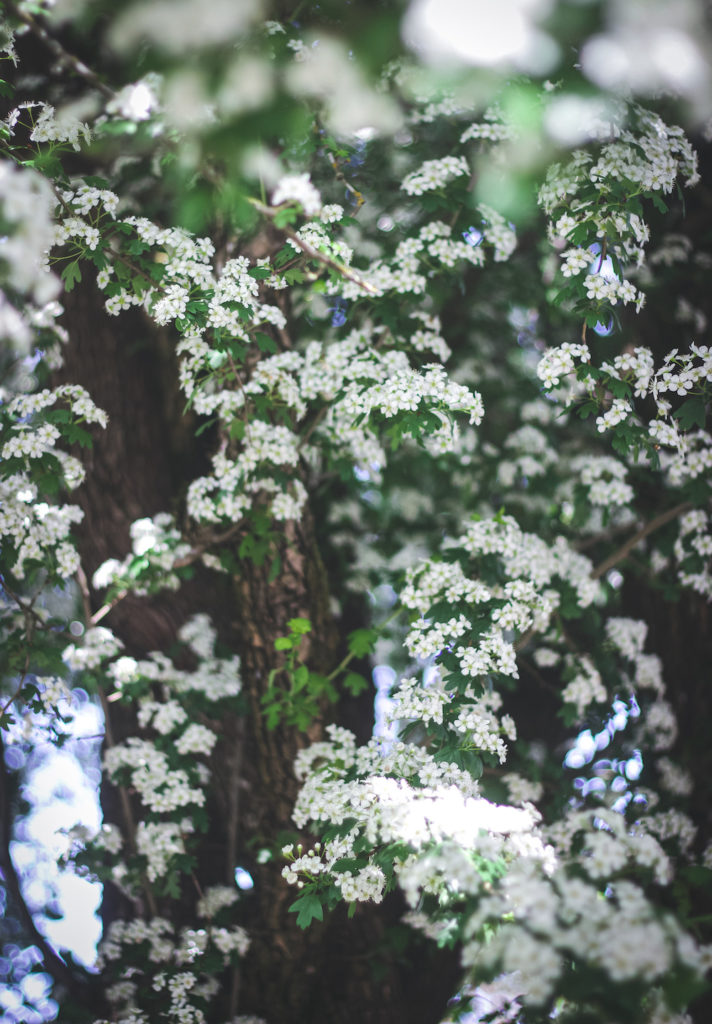
Restorative and Balancing Actions
In research, the berries reduced hypertension associated with arteriosclerosis and chronic nephritis. “Clinical trials of the flowers showed significant improvements in heart patients, especially in cases of mitral stenosis and aging heart” (Mills). Hawthorn is useful with palpitations of all kinds.
Hawthorn has numerous pharmacological effects which help it be a true restorative tonic to the heart. It has cyanogenic glycosides, which are sedative as they increase parasympathetic (aka Vagal) tone of the heart, overall slowing/calming the heart.
The flavonoid and tannin fractions impart vasodilation to the peripheral circulation. These constituents act on coronary circulation and increase the amplitude of the heartbeat.
From Simon Mills:
Hawthorn has “…paradoxical and valuable effect of exerting a sympathetic action on the coronary circulation and a parasympathetic action on the myocardial muscle. The results include a rise in oxygen consumption and energy metabolism of the heart…the sedative effects of the cyanogenic glycosides combine with the vasodilatory effects to lower high blood pressure, but in another paradoxical effect the cardiotonic activity actually helps to raise low blood pressure.”
The opening qualities support peripheral circulation directly associated with flow in the blood vessels and capillaries. This is useful for arteritis and Raynauds, as well as cerebral circulation for helping focus and attention, and in supporting the viscera in digestive spasms.
It is a mild diuretic and has nervine actions through its ability to regulate and balance the heart. I have used it successfully for neurasthenia associated with heart problems or after exhaustion and over-work as Ellingwood recommends.
When it works in this way, it is quite marked. This reminds me to keep the organs and Organ Systems (from a Chinese perspective, which is why I capitalize them) in mind.

Chinese Medicine Perspective
In Chinese medicine, Chinese Hawthorn berries are in the category of “Herbs that Relieve Food Stagnation”. These herbs enter the Earth meridians and help with digestion when these organs are stuck via overload, and Qi and Blood are stagnant.
It appears that Hawthorns are interchangeable and similarly medicinal throughout the Western hemisphere. Is this true between Hawthorns from East to West? I believe they are different but have some similarity.
The Chinese Hawthorn may be of many species, but typically listed as Crataegus pinnatifida. It’s fruits are noticeably larger and fleshier (and in my opinion more earthy) than Western Hawthorns, which may account for its greater application in digestive upsets. Shan Zha looks more like a cross between a Crab Apple and a Hawthorn berry.
In modern Chinese clinical practice, The Western Hawthorn berry is used along side Shan Zha.
Digester of “gunk”
The Chinese have adopted Western Hawthorn as it is in the West for treating the aging heart as well as balancing blood pressure, increasing circulation both peripherally and in the heart itself. In this way, Hawthorne is said to have Blood Moving capabilities for chest pain, abdominal pain and in dysmenorrhea.
Shan Zha Hawthorn in Chinese medicine helps with the digestion of fats, in particular meats. Both Western and Eastern Hawthorns could be described as helping the clarification of built-up debris. This could be in the arteries, blood vessels, more subtly with garnering lucidity to the mind and emotional heart and spirit, or with fat metabolism during digestion.

Heart Opener
Chinese-born practitioner and teacher Jeffery Yuen reminds students that Chinese is a psychosomatic language. When a medical text written in China says an herb or a point is for “Heart pain”, it could mean that the physical heart has pain, and/or the emotional heart has pain, like a heartache or heartbreak.
This concept comes through to all sorts of herbs, Hawthorn included. Michael Moore says it is for chest pain and “as an adjunct for fear of death, constant guarding against pain”.
The energetic signatures of this plant will vary from person to person, but some common themes are Hawthorn being heart- and chest-opening and having a heavy sensation in the heart.
What is left when the chest or heart is opened is a sense of peace and unconditional love and forgiveness. Grief and heartaches are lifted.
In Celtic traditions, Hawthorn is a fairy tree. It is associated with purification, cleansing, fertility and protection of the sacred.
The flowers and berries are a little different. Being of spring and opening around May Day/Beltain, Hawthorn flowers are associated with fertility and the fairy realm. The berries who come ripe in the fall, are more about heart healing (my association, but look at those pigment!) and the ancestral realm.
Like other Rose family plants, the thorns are a reminder that there is protection to the vulnerability of feeling into heart wounding and having an open heart.
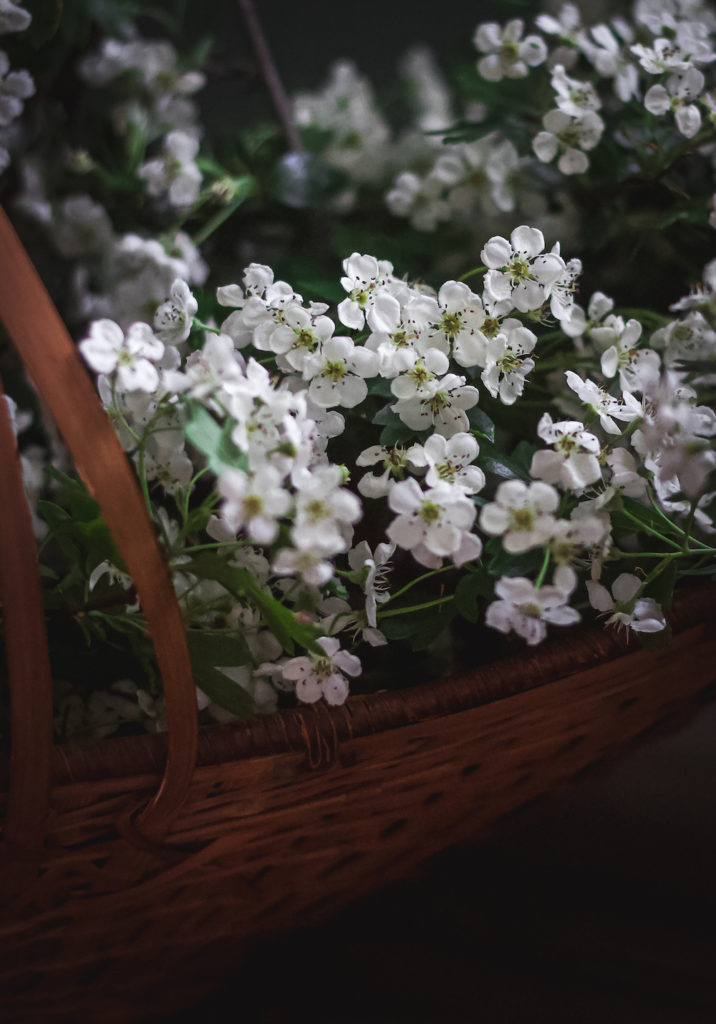
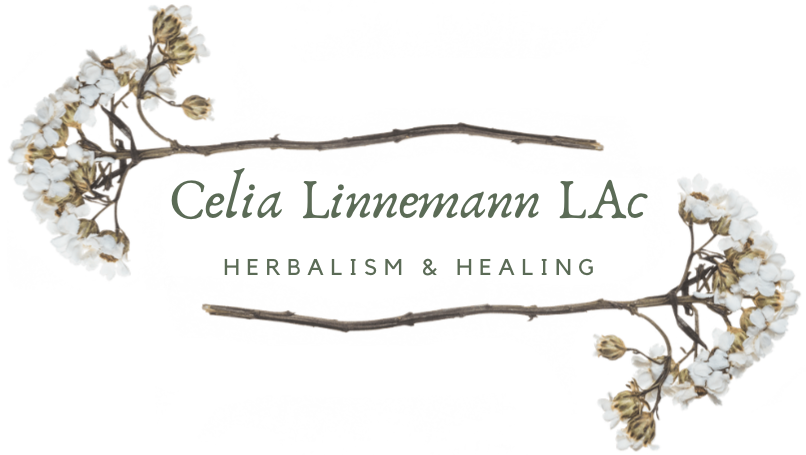
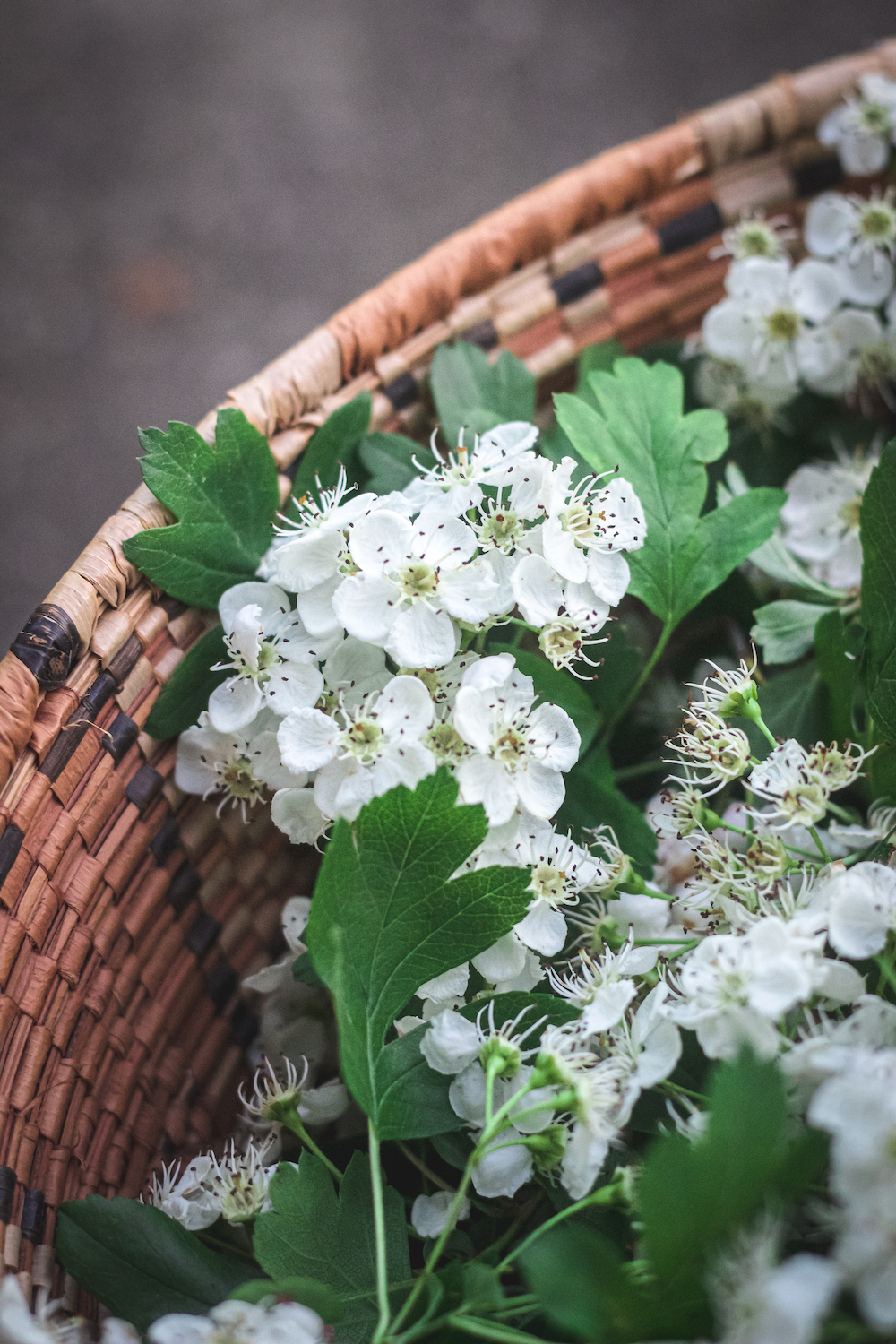
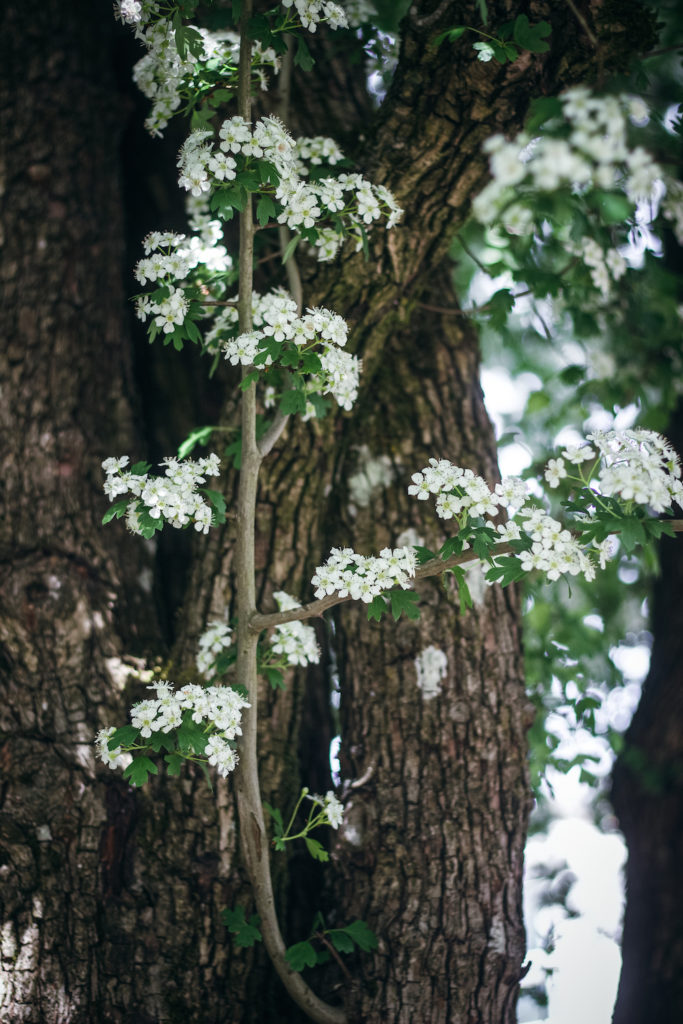

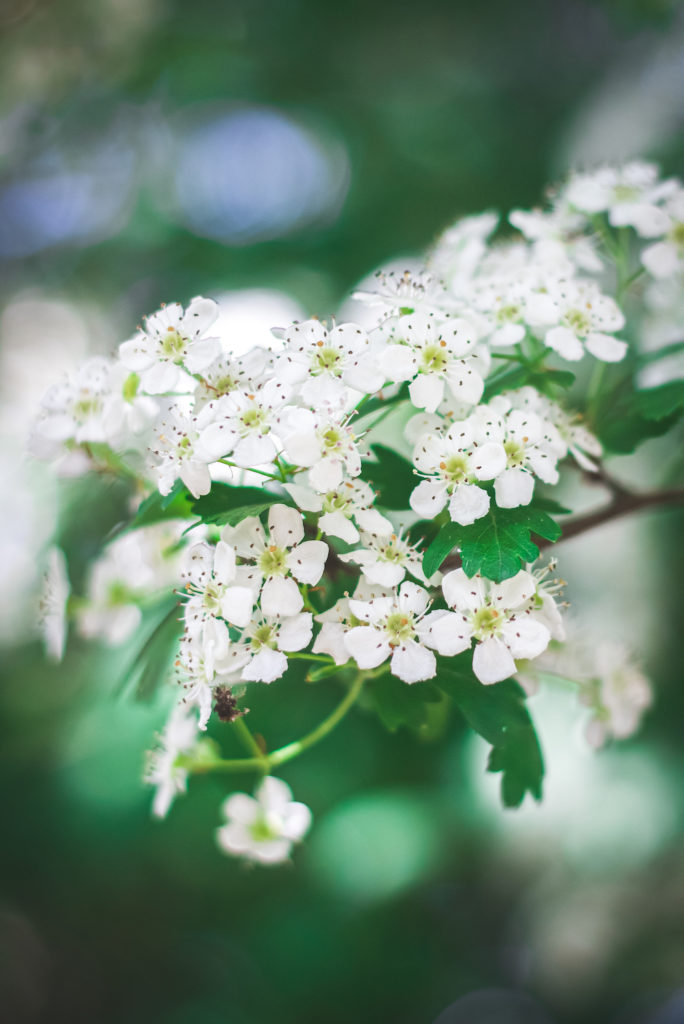





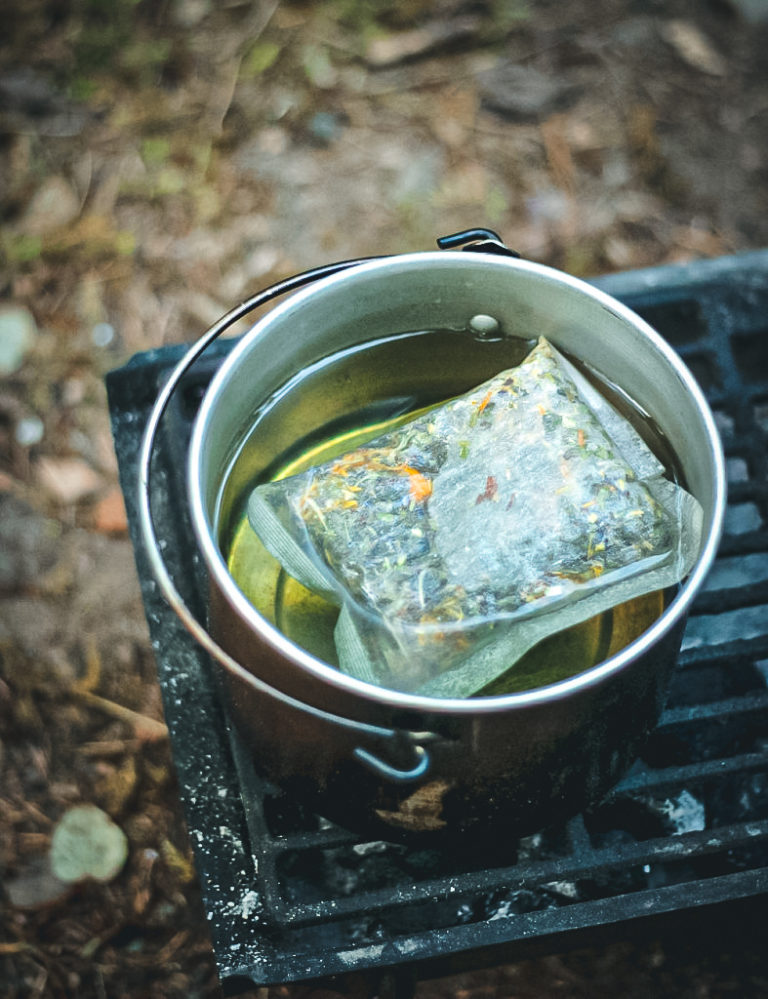

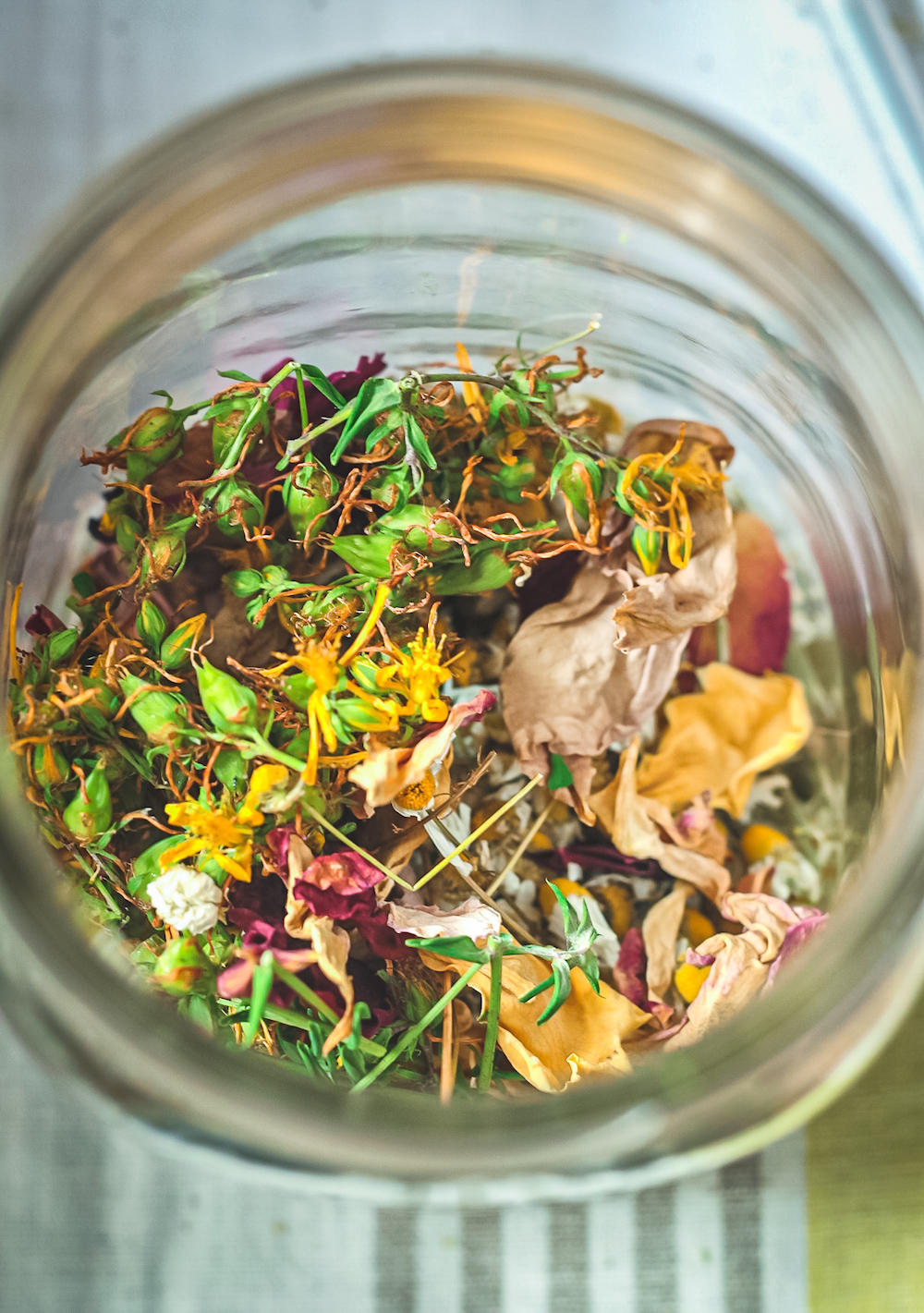
2 Comments